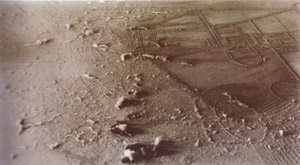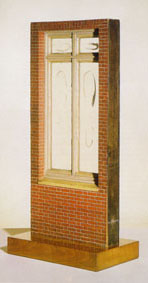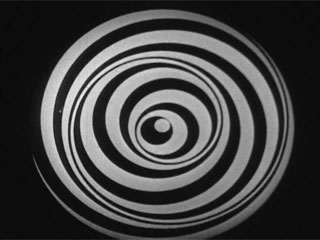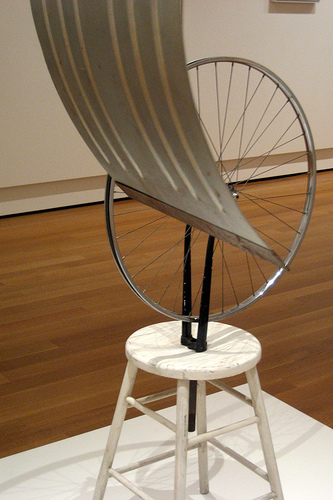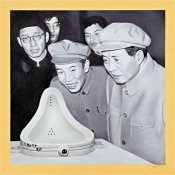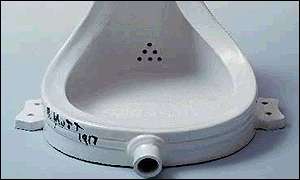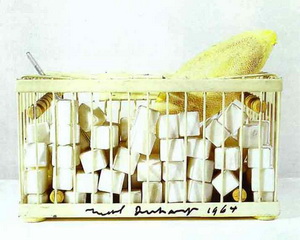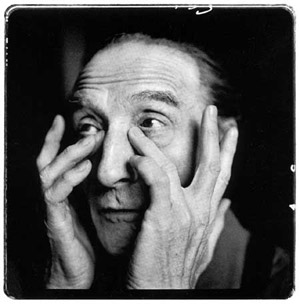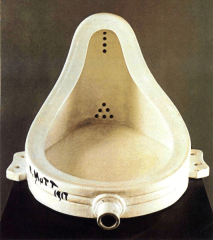Duchampian News & Views
-
Dust Breeding
January 13, 2009"Duchamp decided to visit America.
read more...
He began the Glass in New York in 1915.
He applied lead wires to the transparent glass in the geometric shaps and designs he desired.
The work went achingly slow.
For one part of his Glass–the seives– Duchamp decided to use actual dust." -
Towards a Definition
January 12, 2009 "The complexity of the deceivingly simple-looking Readymades has challenged many over the past century. Trying to pin down the collection of Readymades into a workable body of pieces, many have attempted to seperate them into seperate catergories according to their relative degrees of 'purity'. The formation of such a scale on which to rate the readymades requires a basis for comparison, a point from which to gage degrees of variation: namely a comprehensive .. read more... -
Anemic Cinema
January 11, 2009 "Duchamp used the initial payment on his inheritance to make Anemic Cinema and to go into the art business (Calvin Tomkins). The film was shot in Man Ray's studio with the help of cinematographer Marc Allégret. Various versions were made in 1920, 1923 and eventually in 1926. This is the only film directed by French artist Marcel Duchamp, whose name is associated with the Dada and Surrealism movements. As with similar avantgarde works made by Man Ray, Hans Richter.. read more... -
Marcel Duchamp’s The Creative Act
January 8, 2009 In a piece written for the Session on the Creative Act, held in Houstan, Texas in 1957, Marcel Duchamp considers the role of the viewer in art. He believes that the artist is like a medium who "seeks his way out of a clearing" with no conciousness...about what he is doing or why he is doing it". Therefore, what ultimately determines a work of art's meaning and importance within art history is not the intent of the artist, but rather what the v.. read more... -
Where Next for Mao? Shi Xinning’s Director’s Notes on Chinese History
January 7, 2009 “I almost always work with a staging of completely incompatible props and scenery. For example, Mao views a Duchamp exhibition in China – something that never took place. Or I place a curved steel sculpture by Richard Serra in Tiananmen Square – facing Mao’s famous portrait at the entrance to the Forbidden City. Or I arrange a meeting between a Mao statue and New York’s Statue of Liberty. […] I am not interested in Mao Tse-tung as a real p.. read more... -
Auction of Duchamp’s Readymades
January 7, 2009 In May 2002, according to the BBC News article Urinal Fails to Make a Splash, a company in New York held an auction of "a rare collection of Marcel Duchamp's famous 'readymade' conceptual art". The work " sold for prices below expectations" and some of the items did not sell at all. The most famous of the works sold at the auction was Fountain, which "sold for $1,185,000...short of its low estimate of $1.5m". For fans of Duchamp.. read more... -
Excerpt from Marcel Duchamp: Art as Anti-Art
January 7, 2009 "Why Not Sneeze? was not a success. Not many people saw it, and those who did found it hard to understand, but too strange to be meaningless. It was the kind of transitional object that channeled the hot air of Dada into the lungs of Surrealism, which was at that time just evolving. Later in 1936, Why Not Sneeze? was even included in a Surrealist exhibition in Paris. It was placed in a showca.. read more... -
Marcel Duchamp
January 5, 2009 "Henri-Robert-Marcel Duchamp was born in Blainville-Crevon, a Normandy village, as the son of Eugène Duchamp, a notary, and Marie-Caroline-Lucie Duchamp (née Nicolle). Marcel was the fourth of seven children. Four of them gained fame as artists. Raymond Duchamp-Villon (1876-1918) became a sculptor and Jacques Villon (1875-1963) and Suzanne Duchamp (1889-1963) became painters. Duchamp himself started to paint in his teens. Duchamp's artistic aspirations were.. read more... -
WEIRD WEDNESDAY: Art Museum Toilets Elevated to an Art Form
January 5, 2009“’This museum was founded in the spirit of Marcel Duchamp, who in 1917 produced the sculpture Fountain and changed the way we viewed art,’ stated Director Robert Schlemielle. ‘This piece essentially showcased that art may not be hanging in the proud walls of a museum gallery, but in the common objects and in even in the restroom. So today we launch this website asking some of the same questions about the current art establishment and its high brow art.’”
read more...




